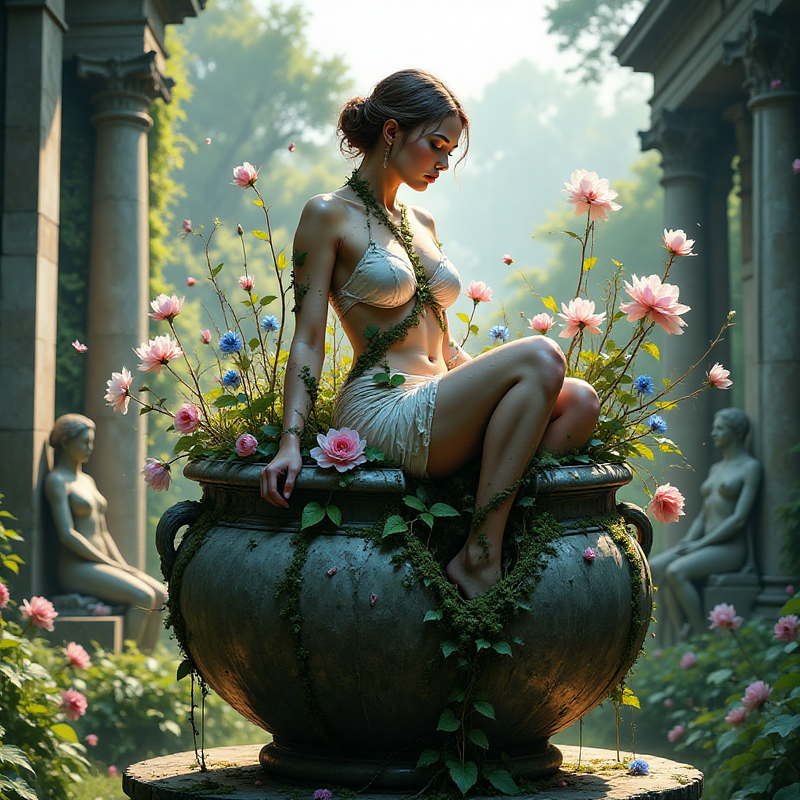8 months ago
A colossal, shadowy figure looms over a surreal, neon-lit underworld, its horns spiraling into infinity like fractal vortexes. Its body is composed of shifting cosmic voids, speckled with burning red stars and glowing sigils of forgotten knowledge. Its eyes are liquid gold, hypnotic and all-consuming, drawing souls into its boundless gaze.
Below, two astral-bound figures kneel, shackled by chains of molten silver, yet upon closer inspection, the chains are loose—revealing that their imprisonment is a self-imposed illusion. Their bodies flicker between human and shadow, caught between desire and liberation.
The Devil’s outstretched hands weave luminous strings of manipulation, controlling floating tarot cards, shifting golden coins, and burning forbidden books, symbols of temptation and earthly distractions. Around them, melting architectures of hedonistic palaces and warped neon cityscapes twist and collapse, representing the ephemeral nature of false power.
Above, a crimson moon drips molten silver, forming a cascading river of lost souls, forgotten dreams, and abandoned ambitions, eternally flowing into the abyss. The air crackles with chaotic, surreal energy, embodying the raw force of passion, obsession, and the choice between enslavement and awakening.
Salvador Dalí surrealism, hyper-detailed, haunting yet mesmerizing, celestial and infernal contrast, glowing sigils, cinematic 4K surrealism, fractal horns, neon shadows, liquid reality, ultra-sharp, dreamlike fantasy.
--avoid: malformed, extra limbs, distorted anatomy, blurry, low-resolution, pixelated, stretched features, exaggerated distortions, cartoonish, low-poly, noisy, CGI look, unnatural lighting, bad proportions, poorly drawn hands, floating objects, watermark, text artifacts, random artifacts, generic horror elements.


